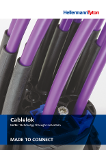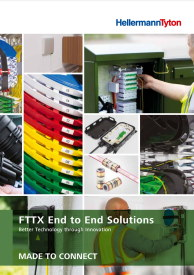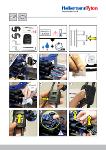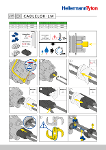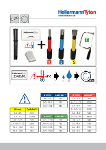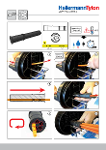Cablelok: HellermannTyton’s patented mechanical seal
View in 3D
Introduction
100% mechanical seal
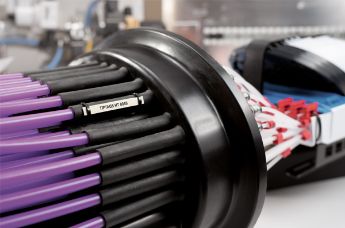
Mechanical seals are increasingly used by engineers and network owners in fibre installation projects across the globe.
Traditional heatshrink methods for cable sealing are time consuming; dependent on the skill of the engineer; and the access required around the port means heatshrink is not conducive to high port densities, particularly applicable in today’s FTTX environment. There are also health and safety concerns relating to gas bottle storage/transportation and confined space use.
HellermannTyton’s patented cablelok mechanical seal enables fast safe cable installation, providing a highly repeatable and consistent seal between the cable and the closure port with excellent non-leak performance. Tested to in excess of 6m head of water, the cablelok does not rely on the skill and experience of the engineer to achieve the required seal, whilst installation times are typically reduced by up to 90%.
Features and benefits of using Cablelok

Engineered with both the application, user and network installer in mind, Cablelok offers:
Durability
- Manufactured from external grade polychloroprene
- Excellent sealing properties in excess of 6m head of water (58.8kPa)
- Exceeds performance standards on temperature usage, ranging from -40 °C and +65 °C (EN 50411-2-3:2012-22)
Versatility
- Eliminates the need for potentially hazardous gas bottle transportation and storage
- Ideal for use in hazardous or restricted areas as no heat or gas is required for installation
Ease of use
- Highly repeatable – the quality of the seal is not dependent on the skill of the engineer
- Rapid installation with no specialist tools required
Flexibility
- All of the HellermannTyton closures are compatible with Cablelok
- Oval port Cableloks for loop through applications
- Multi-drop versions are available allowing more cable drops from the same port or loop through applications
How does Cablelok work?

Each port size on a HellermannTyton fibre closure has a unique identifier and a dedicated series of Cablelok seals (ie: R, B, S, T, D, LM or L).
Unlike heatshrink, that requires direct heat, sealing is achieved by multiple internal lip seals which are compressed onto the cable during installation.
This method of sealing eliminates the need for potentially hazardous gas bottle transportation and storage and is ideal for use in hazardous or restricted areas as no heat or gas is required for installation.
How to install Cablelok:
Step 1: Choose correct sized Cablelok for your cable and port size.
Step 2: Clean and lubricate the cable and opened port.
Step 3: Insert the cable through the base.
Step 4: Lubricate the Cablelok and thread onto cable.
Step 5: Pull Cablelok through port until seals are seated.
Product ranges
Video of features and benefits
Why choose Cablelok?
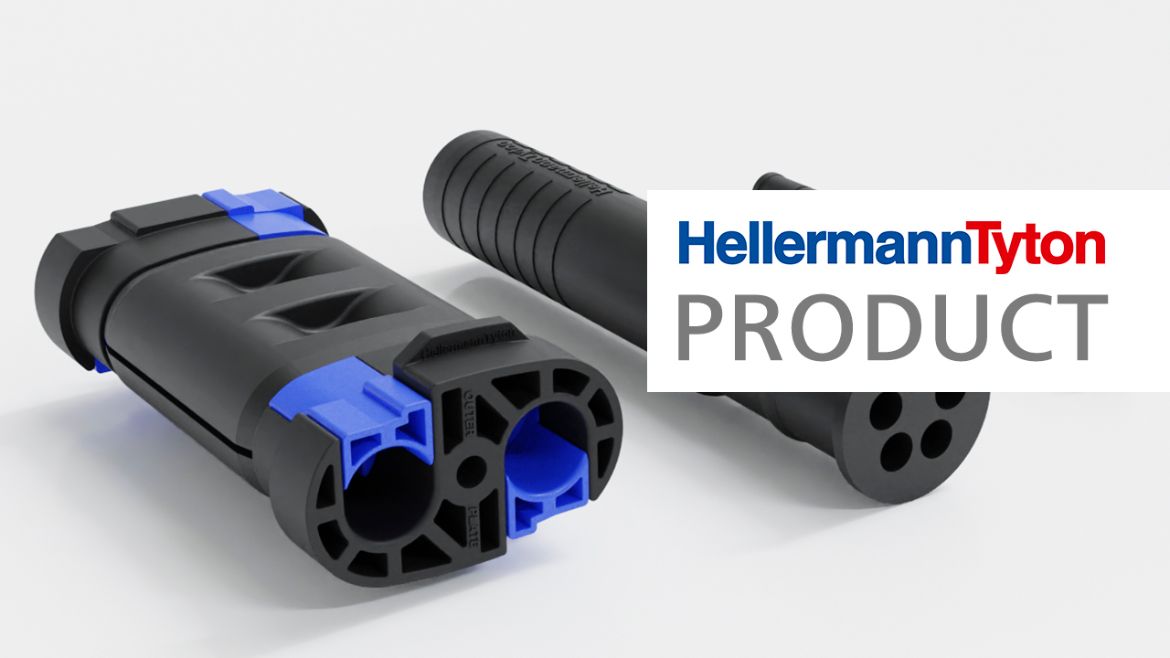
 Argentina
Argentina Australia
Australia Brazil
Brazil Bulgaria
Bulgaria China
China Czech Republic
Czech Republic Denmark
Denmark Finland
Finland France
France Germany
Germany Hungary
Hungary India
India Italy
Italy Netherlands
Netherlands North America
North America Norway
Norway Poland
Poland Portugal
Portugal Romania
Romania Russia
Russia Singapore
Singapore Slovenia
Slovenia South Africa
South Africa South Korea
South Korea Spain
Spain Sweden
Sweden Switzerland
Switzerland Turkey
Turkey United Arab Emirates
United Arab Emirates United Kingdom
United Kingdom







